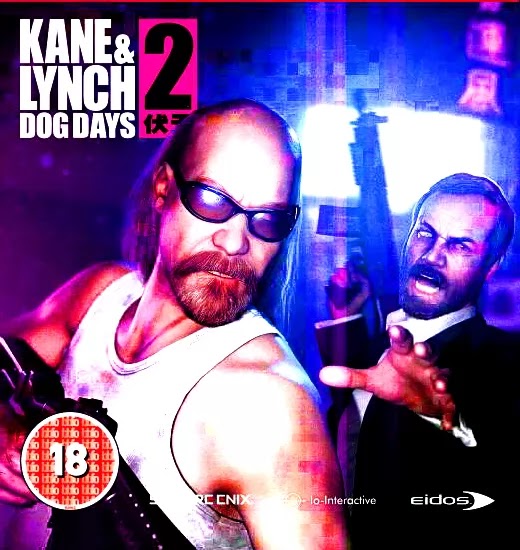

Dead Men aspired to be a virtual Heat, framing itself as a tragic crime epic. This is a stark change from the first game, which put a lot of time and effort into building up its plot and characterisation. The game's knock-off handicam style is aggressively ugly, but interesting with it. For much of the duration, Kane and Lynch are as oblivious to what's going on as we are, stumbling blindly forward as they hope the situation will clarify itself at some unspecified point down the line. We're given no context to events apart from the dialogue between Kane, Lynch, and a handful of peripheral characters. The story plays out like a roughly edited Youtube video, featuring a cold-open and an even colder close. This handicam style could easily be dismissed as a gimmick, but it's a gimmick that IO Interactive let inform so many other aspects of the game. IO even mimics the tilt and wobble of the camera as it follows Kane and Lynch's movements, a motion which is so unpleasant as to be literally nauseating. Meanwhile, the image frequently glitches and pixelates, as if the player is watching a streaming video on a bad wifi connection. The colour contrast is horrible, washing out muted colours almost to monochrome, and rendering bright colours such as neon-signs with migraine-inducing glare. Kane & Lynch 2 takes this idiosyncrasy and turns it into a deliberate aesthetic, one which actually makes the game look less attractive. Many games render their worlds as if viewed through a lens, depicting camera artefacts like lens-flare, motion-blurring, and chromatic aberration in a misguided pursuit of graphical realism.

What is clear is that it must be the worst handheld camera ever manufactured. The action is relayed to us from the perspective of a handheld camera, although the game doesn't explain who is holding the camera or why Kane and Lynch let themselves be filmed engaging in increasingly atrocious gunfights.

Before heading to the deal, however, Lynch decides to collect a debt from a local gangster, an event that goes awry and causes a chain reaction that ripples from Shanghai's criminal underworld right up into the heart of the city's political infrastructure. Kane & Lynch 2 takes place in Shanghai, and sees Lynch invite Kane to China to help him negotiate an arms deal set up by a crime-boss named Glazer. This is closest Kane and Lynch come to a warm exchange. What results, weirdly, is a far more interesting game than its predecessor. Rather than expanding and refining the concept of the previous game, however, IO went about elaborating upon all its worst elements - the clunky combat, the hollow story, and the ugly aesthetic. Most developers would have quietly left the dysfunctional duo in virtual purgatory, but IO interactive instead decided that Kane & Lynch deserved a second chance. Unfortunately, the game turned out to be profoundly mediocre, featuring bland presentation, nondescript cover shooting, and a story that relied too heavily on the better work of other artists to really stand out. It followed two aspiring bank-robbers, the misanthropic Kane and the psychotic Lynch, who were notable mainly for their peculiar talent for screwing things up. The original Kane & Lynch (subtitled Dead Men) was a third-person shooter inspired by cinematic crime-epics such as Michael Mann's Heat. What's interesting about it all, though, is that most of this ugliness (although admittedly not all of it) is deliberate, in what is a fascinating example of a developer exploring its own mistakes and mishaps through another creative work. It's aesthetically ugly, it's thematically ugly, it's even mechanically ugly, a clumsy and chaotic third-person shooter with a sticky cover system and AI thicker than asbestos soup. Kane & Lynch 2 is an ugly game in almost every sense.


 0 kommentar(er)
0 kommentar(er)
